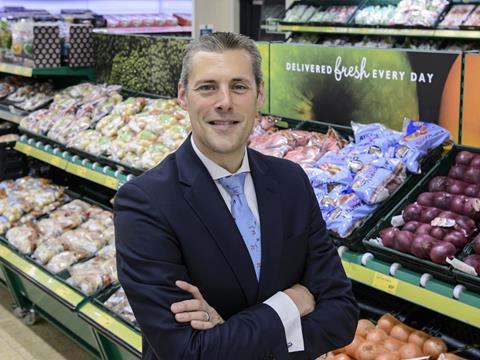
“Nonsense,” says Matthew Barnes, looking somewhere between bemused and amused. Then he taps the Kantar figures in front of him. “I’m looking at 18.3% sales growth for 12 weeks and 21.1% in the last four weeks. People will say what they want to say, they have their own agendas, and I understand that. But the idea that Aldi is plateauing is nonsense.”
I’ve asked the question because the like-for-like sales figures released by Aldi have proved contentious. The traditional like-for-like sales metric used by all the supermarkets, and therefore widely considered a reliable measure of performance, does not incorporate new store openings. But when Aldi released its results last September, its like-for-like figure incorporated sales from new stores.
Since the once silent Aldi started releasing numbers it always has done. But, according to some, by doing so in 2016 it flattered the figure to such an extent that if you stripped out sales from Aldi’s new stores, traditionally measured like-for-likes would at best be flat, going in reverse at worst. It’s a theory that suggests a very different performance to the runaway success Aldi has enjoyed over the past few years. So what’s the reality?
“For me, it’s very telling that analysts and commentators never once raised the question of like-for-likes, or expressed any frustration that we wouldn’t release them, when they were well over 20% and growth about 35%,” says Barnes. “It’s clear the only reason it’s coming into play now is because there is an appetite and a desire to report a change in dynamics in the market. There are many advantages in being privately owned, I have never hidden that. We can keep our cards close to our chest. But there is nothing to hide about our like-for-likes. They have remained positive. They have never been negative.”
In January, after Aldi announced a “record Christmas” with a sales lift of 15% compared with the previous year, the issue reared up again. To cease the ensuing “misrepresentation” Barnes said the typically reported like-for-like figure, without new store sales included, would have been over 5%.
“What analysts say generally doesn’t matter to me, our business, or our customers, other than when it generates headlines and cuts through to the media and it isn’t true. The reason I commented around Christmas is because there was clear misrepresentation. The analysis at the time didn’t even warrant the title ‘fag packet’. I am here to protect the company and the brand. When people are deliberately peddling misinformation I will be there like a flash to correct it. So I said our Christmas like-for-likes were above 5%. And they have grown since then.”
Snapshot
Age: 44 on Sunday
How do you plan to celebrate? I’m going to go out with my wife and three kids to a local restaurant for a slap-up Sunday lunch
Last good book: Black Box Thinking by Matthew Syed
Last good film: Sully. Tom Hanks is a phenomenal actor
Last good album: Ed Sheeran. I’m going to Glastonbury for the first time and he’s headlining
Are you staying in a tent? I am
An actual tent, not glamping or something like that? (Laughs) Well, I didn’t say it wasn’t a glamping tent… I can’t wait. I love music. Everyone who has been there says it’s such a special experience, so we will give it everything and have the most fun we can
What advice would you give an aspiring CEO? Remain true to yourself, work very, very hard for what you believe in and, if you listen to your heart and not too many other opinions, and follow what you believe in, then success is possible
So what would the Easter like-for-likes be if you stripped out new store sales? “High single-digits, nearly double-digits.” So 8% or 9%? “In that ballpark, yes.” Below 8%? “No.”
Around September, Aldi will reveal its new full-year results. Does Barnes feel obliged to publish a traditional like-for-like figure, if only to avoid another round of negative chat and conjecture?
“Where would the obligation be? There is no obligation in terms of a legal requirement and it’s just not important.”
But if you don’t, doesn’t it give critics ammunition and prevent a fair comparison between Aldi and the other supermarkets that routinely do?
“If we start to go down the route of releasing figures there will be eight or nine other figures a plc has to release. So where does it stop? We have an obligation to release the figures we provide to Companies House. That’s where we start and that’s where we stop. I’ve always been very happy to answer questions, but if they ask us about data or figures that we are not obliged to release, they will get a very polite ‘No, thank you’. I would challenge any other CEO of a plc to say they wouldn’t like to be in that position. And I’m not going to put myself in a position where I don’t need to be.”
More importantly, Barnes doesn’t consider a traditional like-for-like figure accurately reflects Aldi’s performance, not least because its new stores often deliberately cannibalise existing ones. “We have a long established store in Tamworth that wasn’t growing sales because we couldn’t increase the size of the car park. We opened a store one mile down the road and guess what happened? In Tamworth One, the sales were slightly cannibalised. But overall, sales in Tamworth have nearly doubled. And that is a microcosm of the macro environment. There are stores that have experienced a real plateau in growth where we have deliberately opened stores nearby and cannibalised those stores. Last year we grew store numbers by 10%, so it’s going to happen. That’s just simple logic. The reality is we are growing like-for-like terms and gross terms at the fastest rate since 2014. And May has kicked off stronger than April.”
Fighting talk
Questions aren’t only being raised about sales. Last year, Aldi’s profits fell 15% to £212.6m thanks to a combination of investment across the business and the impact of rivals cutting prices to get closer to Aldi. In turn, Aldi cut prices to maintain the gap.
Last week’s Grocer 33 showed Aldi’s basket was 15.1% cheaper than Asda and 21.2% cheaper than Tesco, so it’s working. But it’s clearly hurting Aldi’s bottom line.
Barnes insists, as ever, that a consistent 15% price gap will remain. “We will continue to invest and invest. Keeping it simple, the drivers behind bottom line profitability are your margin, your product and the costs of running the business. Our margin has taken an impact. But we have not passed on anything like the costs we have taken from our suppliers to our customers. Thousands of prices haven’t gone up this year. We have had to put some up, but we have cushioned our customers from the full impact.”
As a result, Aldi’s margin “continues to drop” (he politely declines to divulge what it has dropped to) but says “our profitability at the end of Q1 is looking very strong compared to Q1 last year. There are some big challenges ahead, but we are excited about them because they exist for everybody. When you go into a fight and you know you’re the best prepared, the fittest and the strongest, and I fundamentally believe we are, we have a massive opportunity.”
A bigger opportunity than the 1,000-store estate it predicted it would achieve by 2022?
“We will be at 1,000 stores well in time for 2022. I can say that with absolute assurance. We have 700 stores now and 300 sites already approved on our books. Five years is a hell of a long time in grocery, you can see that by what’s happened in the last five years, so we don’t look further ahead than that. But if we get very granular and logical, there are 600 towns and city locations where we don’t have a store, many of which we could easily have two, three or four stores.”
Four stores?
“Yes, in the likes of Bath, or Torquay, we could easily have three and we don’t have one. We don’t have a store in Watford, that would be a six to eight-Aldi town. We’d love to be in Watford and have four stores, if not more. So the logic says there are 600 towns and cities where we don’t have a store, that’s 600 target locations. Or if you look at the population, we think we could have a store for every 25,000 to 30,000 people. There is nothing to suggest we can’t do that.”
According to the ONS, the UK population is 65 million. An Aldi for every 25,000 people would mean almost quadrupling its current 700 store estate to 2,600 stores. Barnes is very clear that any projections over five years is “just speculating, and I don’t really like speculating, but my faith in our ability to continue growing in the long terms is as strong and unshakeable as it’s ever been. The appetite for the Aldi business is stronger than it’s ever been, so will we run out of opportunities? Definitely not. The only other part of that equation is will customers fall out of love with us, and we just won’t allow that to happen. In all walks of life consumers want the best quality they can afford, at the best price available. What drives those two outcomes is the intent and expertise to get there, and a business model that enables us to survive off a much lower margin than anyone else.”
So how exactly does Aldi do that? “There is no one secret to Aldi’s business model but we are constantly, scientifically, looking for marginal gains. We’ve come through a concerted attempt by retailers to invest in their bottom line to close the price gap, and they haven’t succeeded. The big four keep dropping market share, it’s been happening for years, month after month. In that time, we have tripled our market share and quadrupled our sales.”
It’s also become the fifth biggest supermarket in the UK in the process, overtaking the Co-op. How much of that was down to the Co-op shedding space, including selling 300 stores to McColl’s?
“When you look at our growth generally against everybody, it’s just continued. The Co-op has shed space, but even before they started doing that the gap was closing. It was clear from a long way out it was going to happen, and it did. And we are very happy to be the number five.”
As Aldi continues to evolve, a perennial question remains: is it moving too far away from its classic discounter model by adding too much choice to its ranging, or by opening new stores that are significantly more expensive to run? Aldi’s Glascote store is a perfect example of how Aldi sees its future range and format working.
“If we still had the same supermarkets we had seven years ago, we would still be on 2% market share. That’s a fact”
The gleaming ‘Project Fresh’ future format at Glascote has been three years in the making following “intensive trial after trial after trial” and it’s undoubtedly got a relative wow factor compared to Aldi’s oldest stores. But Barnes says a “big team, who are very experienced in our business, are solely responsible for new store design. At the heart of that is cost, productivity and efficiency. Neither must be compromised. Of course it’s more expensive to fit, running costs are more. Does it deliver more sales? Yes, but we don’t rush. We are very considered. We are very careful we don’t move away from our core fundamentals. But if we had the same supermarkets we had seven years ago we would still be on 2% market share. That’s a fact.
“Everyone is entitled to an opinion. But it’s an opinion through the eyes of someone that doesn’t fully understand what we are doing, why we are doing it, and for how long we have done it. We have grown because of the changes we have made, which have been designed in response to what our customers have told us. And sales have quadrupled since 2010. We still have the smallest stores so we buy the smallest plots of land. We have the smallest store teams, the lowest range of SKUs by a long way, the most efficient supply chain model, more shelf-ready packaging than anyone else, and the highest productivity of anyone in the market. That’s all fact. I will argue that with anybody. None of it has changed.”
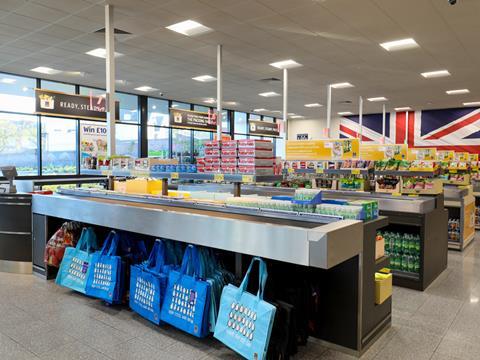
Neither has turnover at the top. “The board has an average of 17 years with the company. There isn’t anyone with less than 14 years. Money can’t buy that, it’s formidable. Everyone has been with the business through the tougher years, when we threatened to perform, but the rug was pulled out from under us by mistakes we made. So there is no way anything would get through our board meeting that would be detrimental to us. We subject every decision to a forensic level of rigour, detail and trial that means the vast majority of decisions will be right. We remain a limited line retailer, 94% private label, EDLP, only 5% of our sales are on promotion. We are the only ones to do that. It’s our core. But if we hadn’t evolved then we would have died.”
One of the obvious evolutions in Aldi’s ranging is the still-growing chilled food range. Aldi only launched a 12 strong line of ready meals in 2012, including M&S-style chilled mashed potato, an unheard of luxury at the once ambient-heavy operation. But today, in Glascote at least, it offers ready mash, ready mash with cheddar, and ready jacket potatoes in the chillers.
“We have 65 ready meals now. It’s a fraction of what you would find down the aisles of a multiple, but we are the biggest ambassadors of the Pareto principle you will find, which says you can deliver 80% of the outcome with only 20% of the income. We have less than 20% of the SKUs others have, we have 1,500, maybe 1,750 when you add in seasonal items, compared to over 30,000 at a major multiple. But we have the biggest-basket grocery shop in the market. That’s Pareto working at its hardest.”
As for quality, Aldi has always talked a good game. Barnes insists it’s the customers doing the talking.
“When you think about quality credentials, customers place most of their trust in baby, fruit & vegetables, and meat. They are three of our biggest overtrades. We have 32% of the baby category. Mamia is the second-biggest brand behind Pampers. That’s a remarkable statistic. And we massively overindex in meat and fruit & vegetables. If we didn’t get our quality right there is no way those categories would perform, let alone perform way above our market share.”
When it comes to overall market share, Aldi has been making inroads for years. Asda has 2% less than it did in 2012, Tesco has lost 3%. Meanwhile, Aldi has gone from 3.2% to 6.9%.
So what about these turnarounds? Last month Tesco released its first like-for-like sales growth since 2010. Morrisons reported better than expected like-for-likes last week. Asda is quietly improving. Iceland is reinvigorated and Lidl is breathing down Aldi’s neck. Does Aldi fear a collective comeback?
“It’s a very tough market for everybody, but in terms of a fightback, our growth is accelerating. We had 1.1 million new customers last year, which is four times more than Tesco, and double that of Lidl. There is a very concerted effort to work on cost bases and to clean up balance sheets because they can’t increase their margins. But grocery has always been hugely competitive. Any suggestion it hasn’t been is folly, and it will continue to be. That won’t change.”
As for Barnes himself, is he feeling the pressure? “I love my job more than ever. I am as excited as I’ve ever been. It’s a high-pressure role but I don’t experience stress because we have a fantastically strong business with great people. Our growth is going as fast as it’s gone since 2014. If we talk about a lot of the commentary, or the appetite to talk about turnaround stories since 2014, our growth is as strong as it’s been since then. We couldn’t be more excited about what’s ahead of us. We have always continued to grow. But in 2017, we are accelerating.”







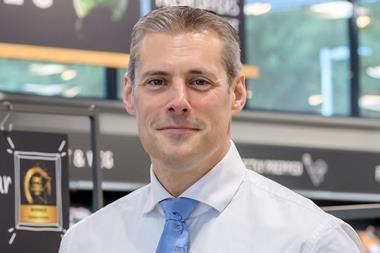

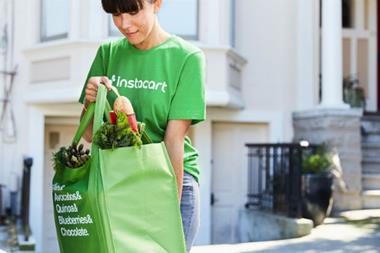
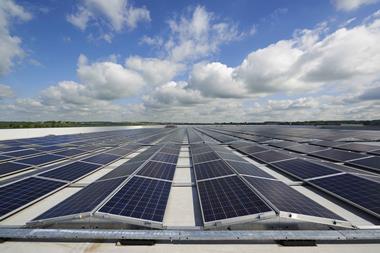
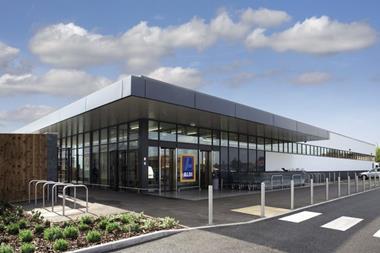
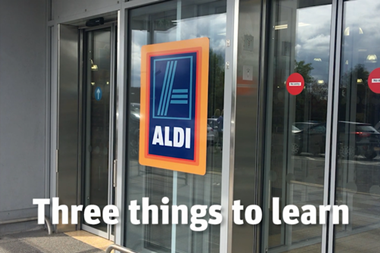


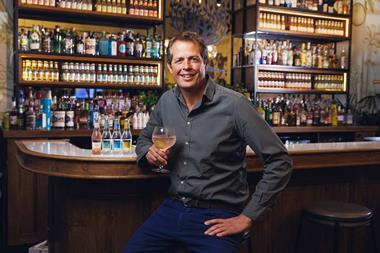
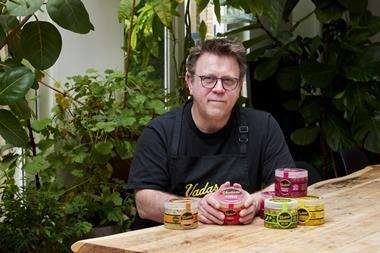
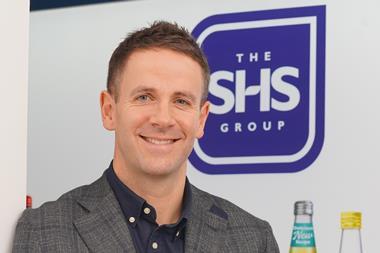
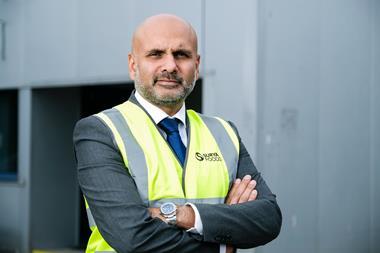
No comments yet